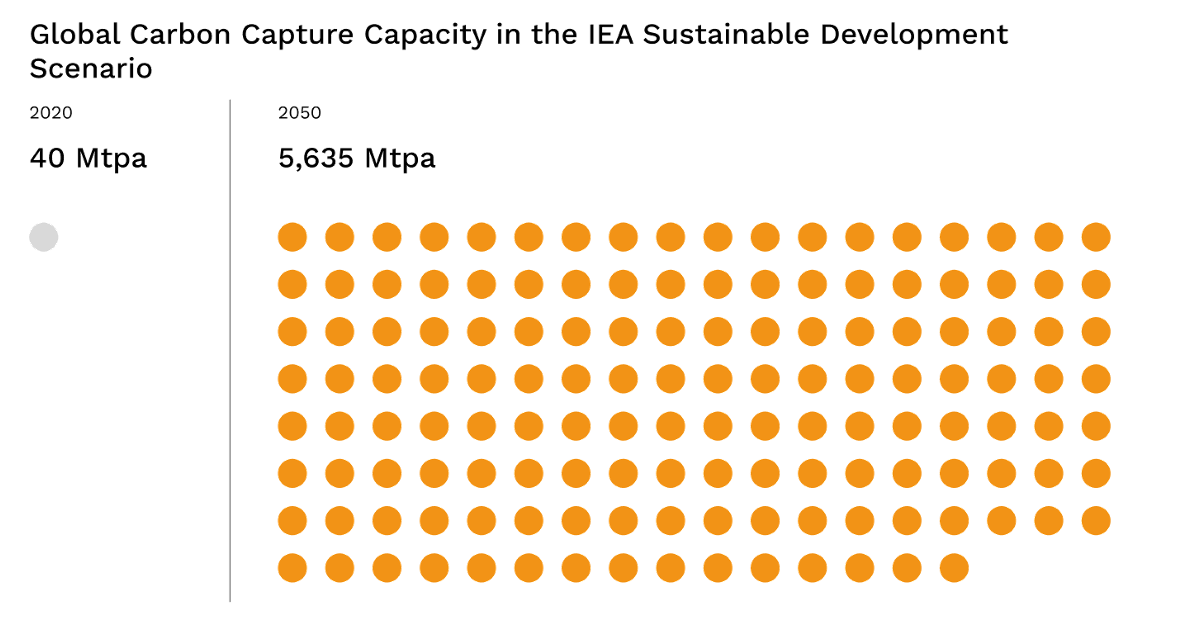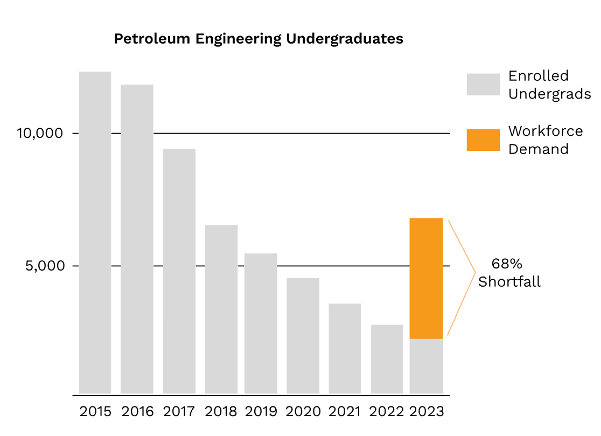How can we cut carbon emissions while maintaining energy security and boosting human prosperity? Damian Beauchamp, 8 Rivers President and Chief Development Officer, recently addressed this key question at the Energy Transition Symposium in Houston.
Hosted by the Society of Petroleum Engineers, this conference brought together technical, financial, and business leaders from across the industry to discuss what technologies will advance a better, cleaner energy future.
To learn more about the role that petroleum engineers will play in the energy transition, we sat down with Damian to discuss the key points and context of his keynote address.
How will the oil and gas industry’s workforce contribute to the energy transition?
Shortly put, the oil and gas industry’s workforce is the energy transition. The energy engineers of today are more important than ever, and we need more of them. Their skills enable them to interact with CO2 in the ways our growing, energy-hungry global population requires.
The oil and gas workforce can impact global emissions reductions in three key ways:
- Reducing emissions within the fossil fuel sector
- Scaling carbon capture and removal
- Building out the world’s broader clean energy infrastructure
Leveraging the skills of this workforce, and growing its numbers, is essential to achieving net zero.
What changes can reduce emissions within the fossil fuel sector?
Already, the oil and gas industry has made progress on its sustainability. It has fronted 40% of the world’s investment in carbon capture, utilization, and storage (CCUS) to date. In 2021 and 2022, it contributed $12B to clean energy technology worldwide. And its progress in addressing upstream leaks of methane – a greenhouse gas more potent but shorter-lived than carbon dioxide – pack a punch towards the short-term emissions reductions key to meeting 1.5C targets.
While the industry is making progress, more work remains. As the global middle class grows and the world’s energy needs expand, it is essential that we prioritize low-carbon sources of reliable, dispatchable energy. It’s important to avoid further investment in unabated coal, particularly in developing countries focused on connecting their populations to the energy they need to increase living standards.
While renewable generation plus battery storage may be too expensive for many of these countries to use at large scale, natural gas or biomass with our Allam-Fetvedt cycle is a much more affordable solution to low-carbon, dispatchable power.
The fossil fuel sector must also decarbonize the 15% of global greenhouse gas emissions that stem from oil and gas operations. In addition to minimizing upstream leaks, an area where new technologies are already accelerating progress, another imperative is to eliminate the CO2 emissions associated with sour gas processing – made possible by the inherent carbon capture in our zero-emissions TarT sour gas sweetening technology.
Other ways to cut oil & gas operational emissions (as my team details in another blog post) include:
- Ending non-emergency flaring
- Electrifying upstream operations
- Using clean hydrogen to decarbonize fossil fuel refining
- Implementing carbon capture utilization and storage technologies (CCUS) technologies
Speaking of CCUS, how can the oil and gas industry scale carbon capture and removal?
Only the gas industry has the experience, infrastructure, and skills in moving fluids required to meet the next decades’ CO2 demands. Net Zero Scenarios project that we’ll need to capture, transport, and utilize or sequester 5,635 million tons per annum (Mtpa) of CO2 in 2050.
At first glance, that magnitude seems scarcely attainable: in 2020, the world moved only 40 Mtpa (see Figure 1).
Figure 1: Global Carbon Capture Capacity in the IEA Sustainable Development Scenario (Source: IEA)
But if you combine the oil & gas industry’s 2020 numbers for moving oil (4,660 Mtpa), natural gas (2,401 Mtpa), and ammonia (189 Mtpa), our fluid-moving capacity is very much up to the challenge (see Figure 2).
Figure 2: 2020 Fluid Capacity by Fuel vs 2050 CO2 capture capacity in the IEA Sustainable Development Scenario
(Source: IEA, EIA)
Why is the oil and gas industry key to building out the world’s clean energy infrastructure?
In its century-long buildout of the world’s fossil fuel infrastructure, the oil and gas industry has honed skills, experience, and relationships that will be key to the clean energy revolution.
To name a few examples: offshore wind benefits from experience honed in offshore oil drilling; geothermal drilling benefits from experience honed in natural gas fracking; networked geothermal exchange for community heating and cooling involves a pipeline system similar to that already used by natural gas utilities (and indeed, Massachusetts utility Eversource is already co-leading one such project); and transporting hydrogen uses many of the same skills, and in some cases could even use the same pipes, as transporting natural gas.
How does the current oil and gas workforce compare to what the energy transition will need?
High-tech, forward-looking, and growing, the industry is well-positioned to drive the energy transition. By 2050, the IEA estimates, CCUS alone will require 70-100 new facilities per year, requiring $700 billion and $1.3 Trillion in capital spending.
But people mistakenly see oil and gas as a stagnant, regressive, shrinking backwater, and so they’re turning down high-potential career paths just as the industry most needs to expand.
New oil-industry grads fell 83% over the past five years, while the 10-year growth of petroleum engineer jobs is 8% higher than the national average. Plus, COVID-related cutbacks of more than 100,000 positions during the pandemic exacerbates the shortage.
Within petroleum engineering specifically, that combination produces a 68% deficit between projected workforce supply and demand (see Figure 3).
Figure 3: Petroleum Engineering Undergraduates
(Sources: Bloomberg, EY, Reuters, Texas Tech, Bureau of Labor Statistics)
To close this gap, we need more young people to study the scientific and technical skills that the energy transition needs. We need more chemists, geologists, and surveyors. We need more mechanical, environmental, and industrial engineers. We need more machinery mechanics, turbine technicians, and plant and transmission operators.
To get there, we need an emphasis on engagement, advocacy, and education across communities, institutions, and the public.
Engage, advocate, educate: that sounds like a feasible framework. Let’s start with engagement. How can we engage with our communities in a way that builds the energy transition talent pipeline?
In communities, we need to emphasize that clean energy brings opportunity.
Many people in historic, fossil-fuel-based energy communities are mistrustful of the energy transition and what they believe it represents. They may think clean energy threatens their jobs, or they may associate it with other ideas that, they feel, threaten their way of life.
But clean energy actually has a lot to offer these communities. The Inflation Reduction Act includes an Energy Community Tax Credit Bonus that provides tax benefits to the entire community where new clean energy projects are developed.
As a first step to building the energy transition skills pipeline, we need to communicate the advantages better.
We can improve community relations with engagement that focuses on trust and transparency.
As part of that effort, we can highlight how clean tech projects create new job opportunities in the communities where they are implemented. And we must engage with local residents and organizations to ensure that these job opportunities are accessible to locals – not just to new arrivals from out of state.
With broader populations, people may support clean energy wholeheartedly but be skeptical about the oil and gas industry’s role in it – and, by extension, more skeptical of building their own career in that industry. What role does advocacy play with the general public?
You’re right that the same communication hurdles that have challenged community relations also, though perhaps in a reverse direction, impact the reputation of the oil and gas industry to the nation as a whole.
The industry is key to the energy transition – but most people don’t know it. Consequently, it is imperative to promote oil & gas’s contributions to the energy transition, and to push back against the idea that certain technologies are fated to win or lose in the clean energy technology race.
In our industry communications to the wider public, we need to demonstrate the value of a skilled and engaged workforce and its contribution to our domestic and global net-zero goals.
Now, we’ve discussed engagement and advocacy. How do you recommend we approach education?
In some ways, education is the culmination of all three pillars.
To make the energy transition happen, we need to address the deficit between projected workforce availability and projected workforce needs. To correct the aforementioned 68% workforce deficit, we need to boost the amount of young people who pursue key oil & gas industry skills, both in universities and in apprenticeships.
To build this skills pipeline, we need to partner with colleges, universities, and apprenticeship programs to provide opportunities to study (and boost interest in) these essential skills.
To give students accessible, hands-on experience, we need to build partnerships between centers of learning and the oil & gas industry to create unique internship and apprenticeship experiences throughout the value chain. And we need to implement education and training initiatives to bridge gender and diversity gaps within the industry.
It’s a big challenge, but I thoroughly believe in our collective ability to do really hard things when we commit to it.




